Athletes and Activism

They strove to be the best on the fields, courts, and diamonds on which they played, yet once off the field, and out of uniform, African American athletes often became invisible second-class citizens in the eyes of the white fans, who moments earlier had cheered them on.
Throughout the fight for equal and civil rights, African American athletes led the way. From Paul Robeson to Muhammad Ali these athletes put their careers and livelihoods on the line in the name of racial justice.
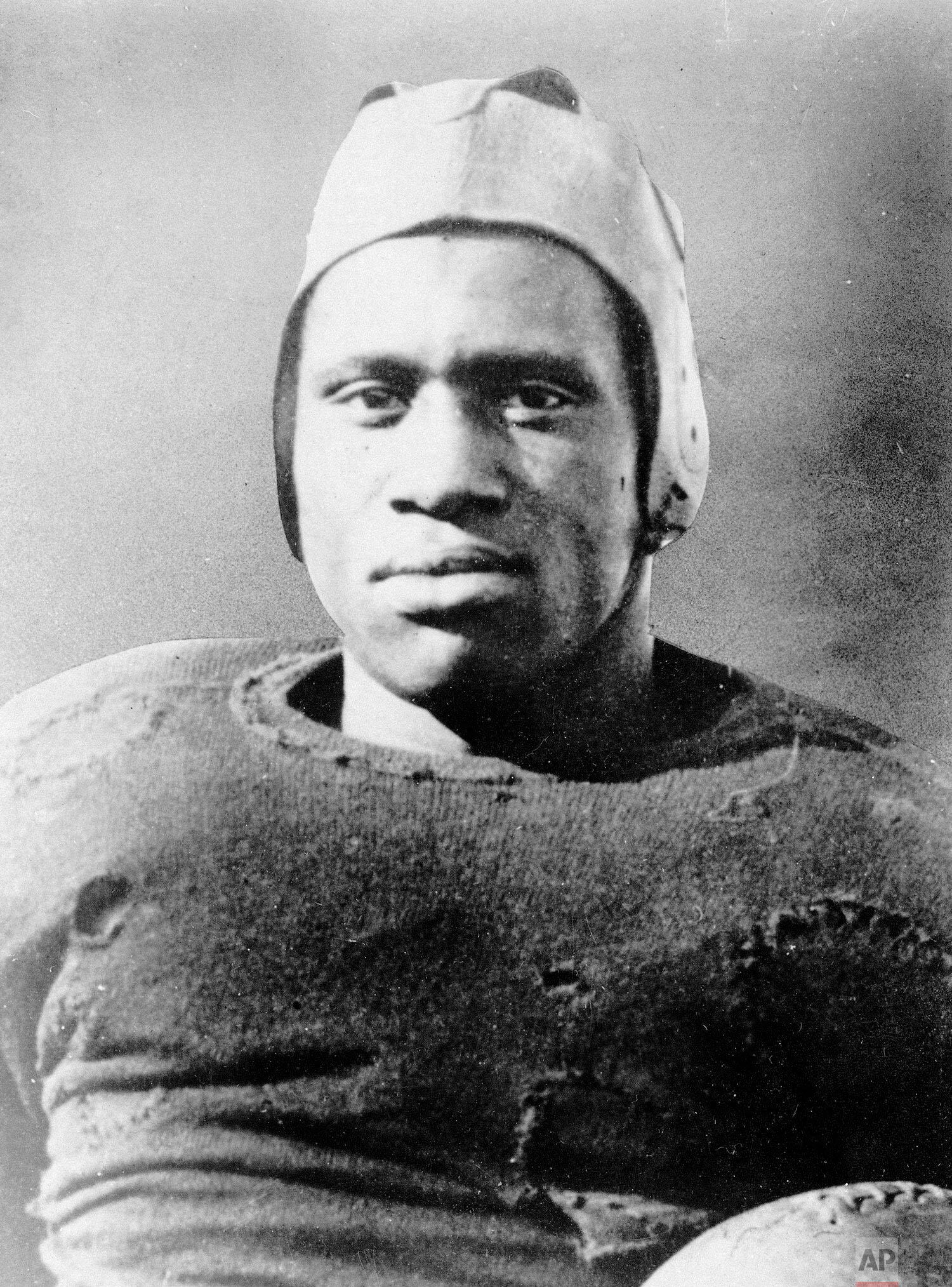
Paul Robeson is seen as an all-American football player at Rutgers University, New Brunswick, N.J., 1917. (AP Photo)
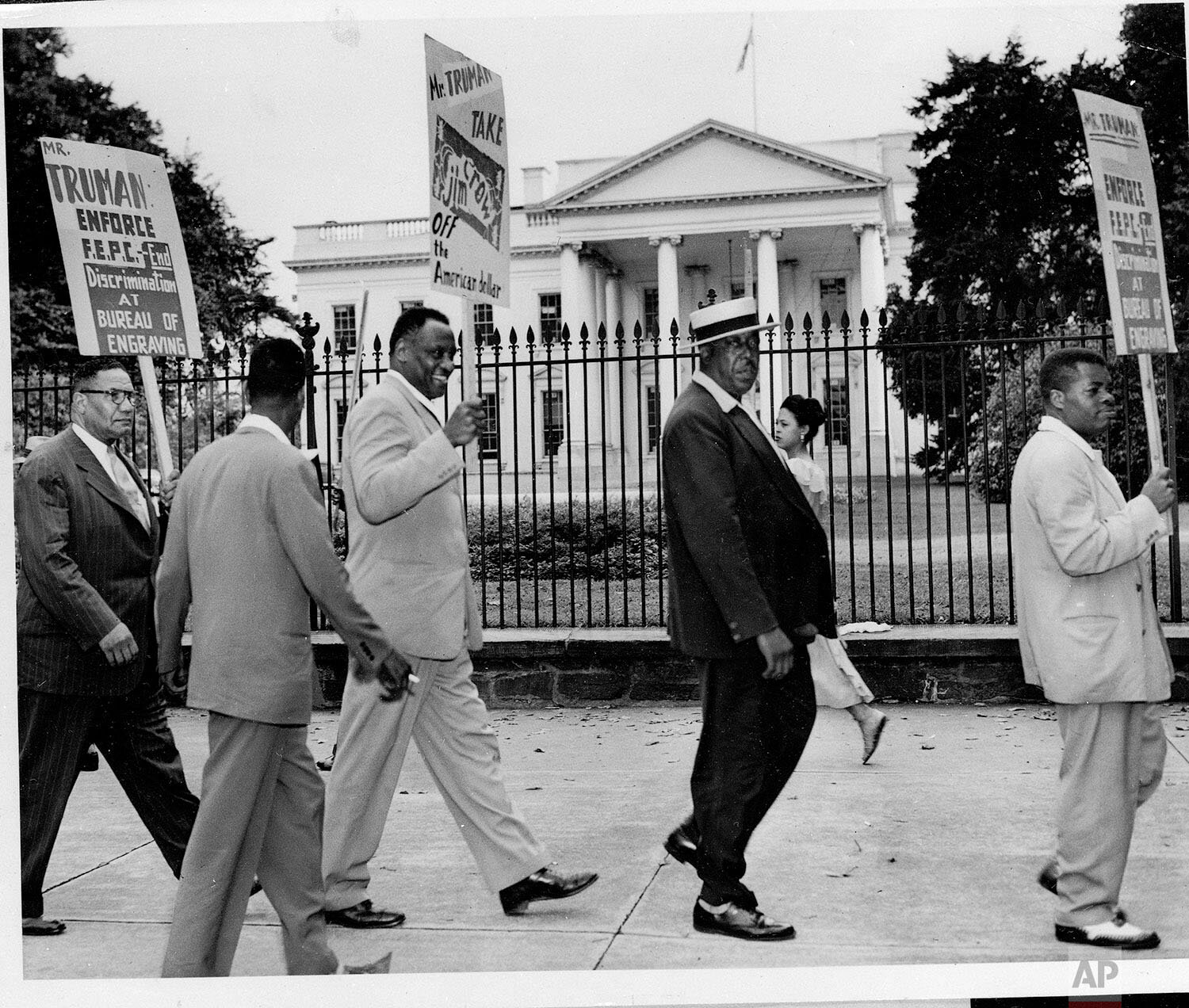
Singer Paul Robeson, third from left, pickets with others in front of the White House, Aug. 4, 1949, calling on Pres. Truman to "end discrimination at the Bureau of Engraving." (AP Photo/Henry Burroughs)
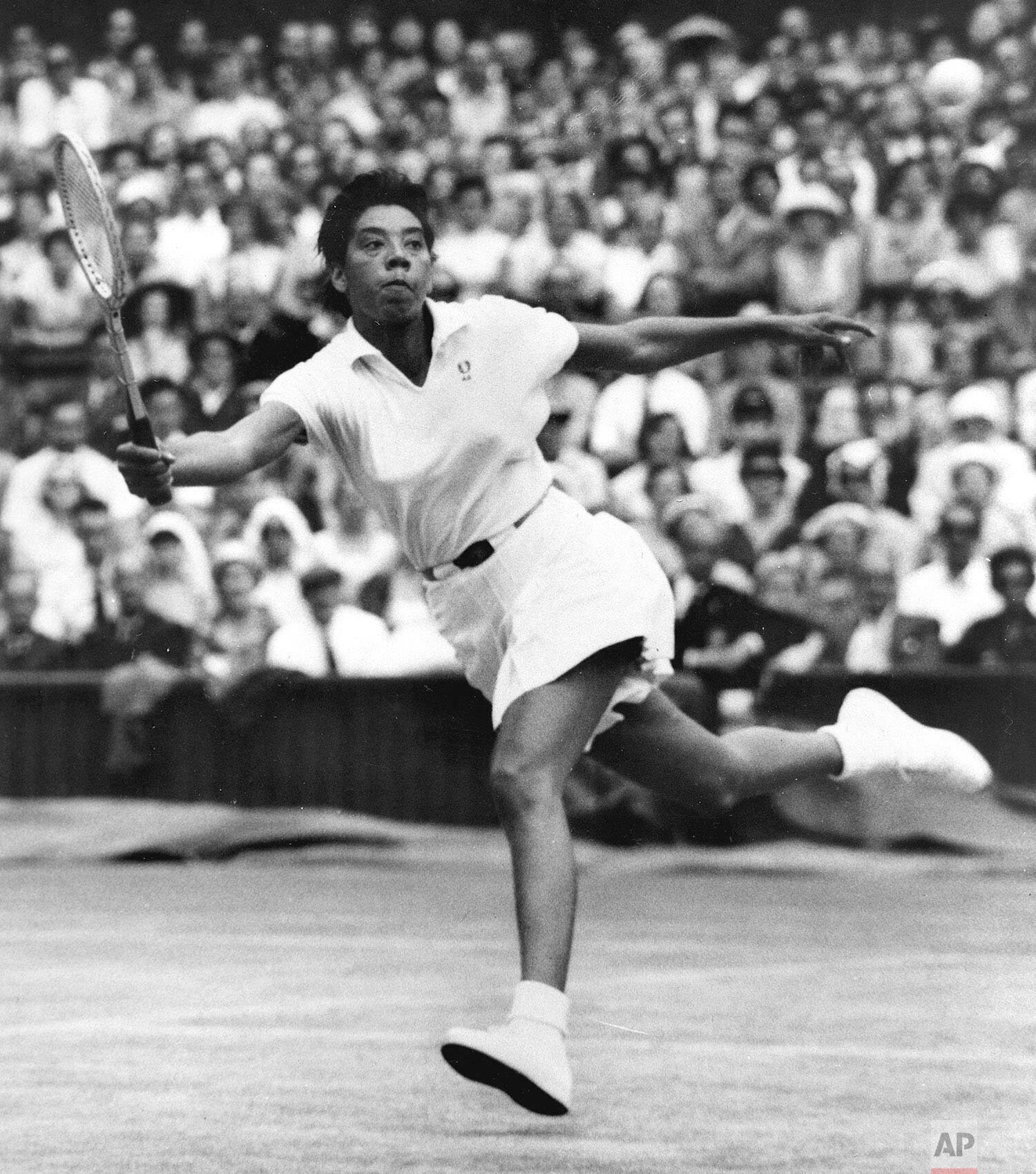
Althea Gibson prepares to volley against Britain's Ann Haydon during the Wimbledon womens singles semifinal tennis match in Wimbledon, England, in this July 3, 1958 file photo. (AP Photo)
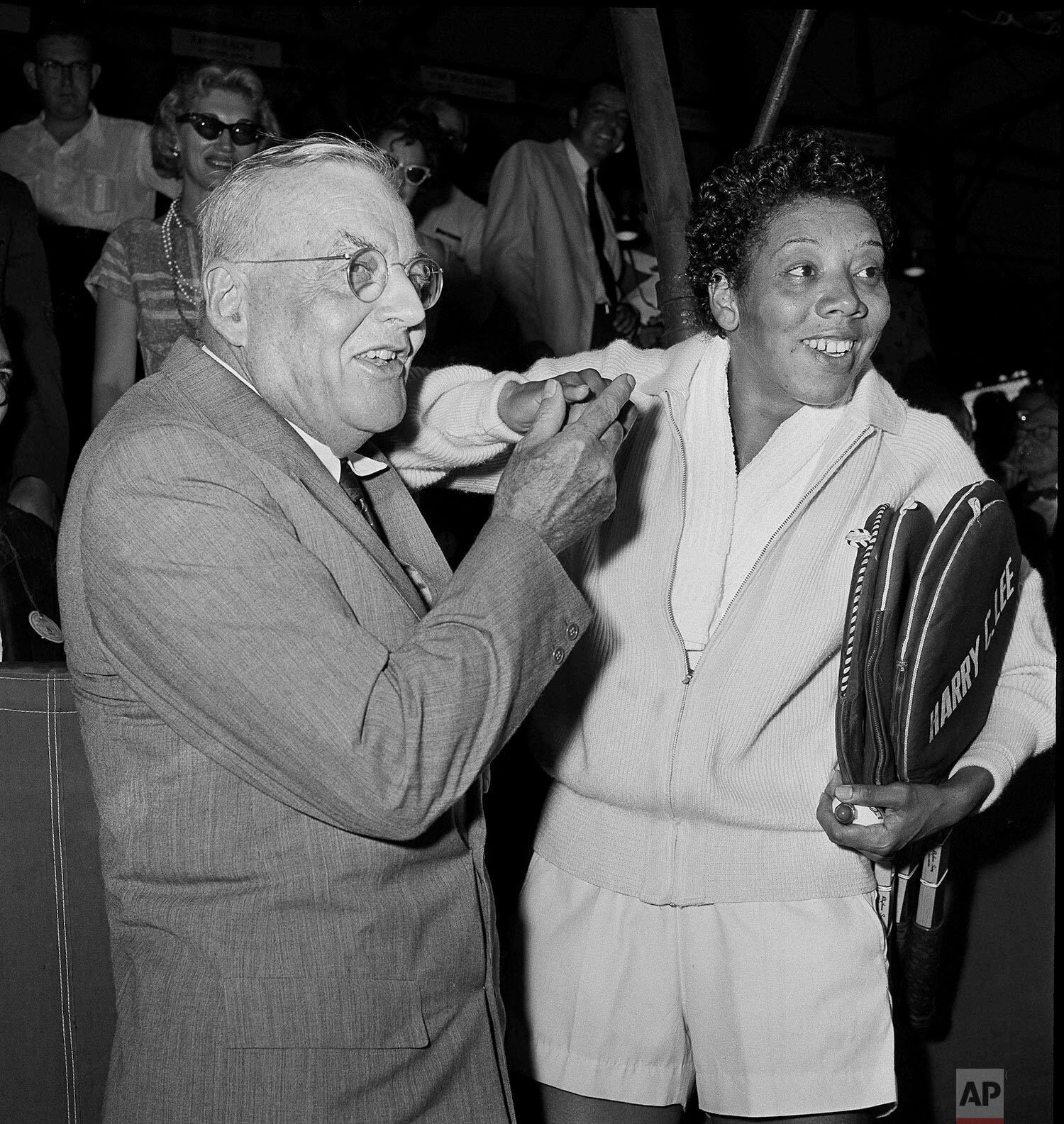
U.S. Secretary of Strate John Foster Dulles and Althea Gibson in stadium of West Side Tennis Club in New York, Sept. 7, 1958. Gibson won the U.S. Championship for the second straight year. Dulles flew in from Washimngton D.C. to make cup presentations at the tournament finals. (AP Photo/Harry Harris)
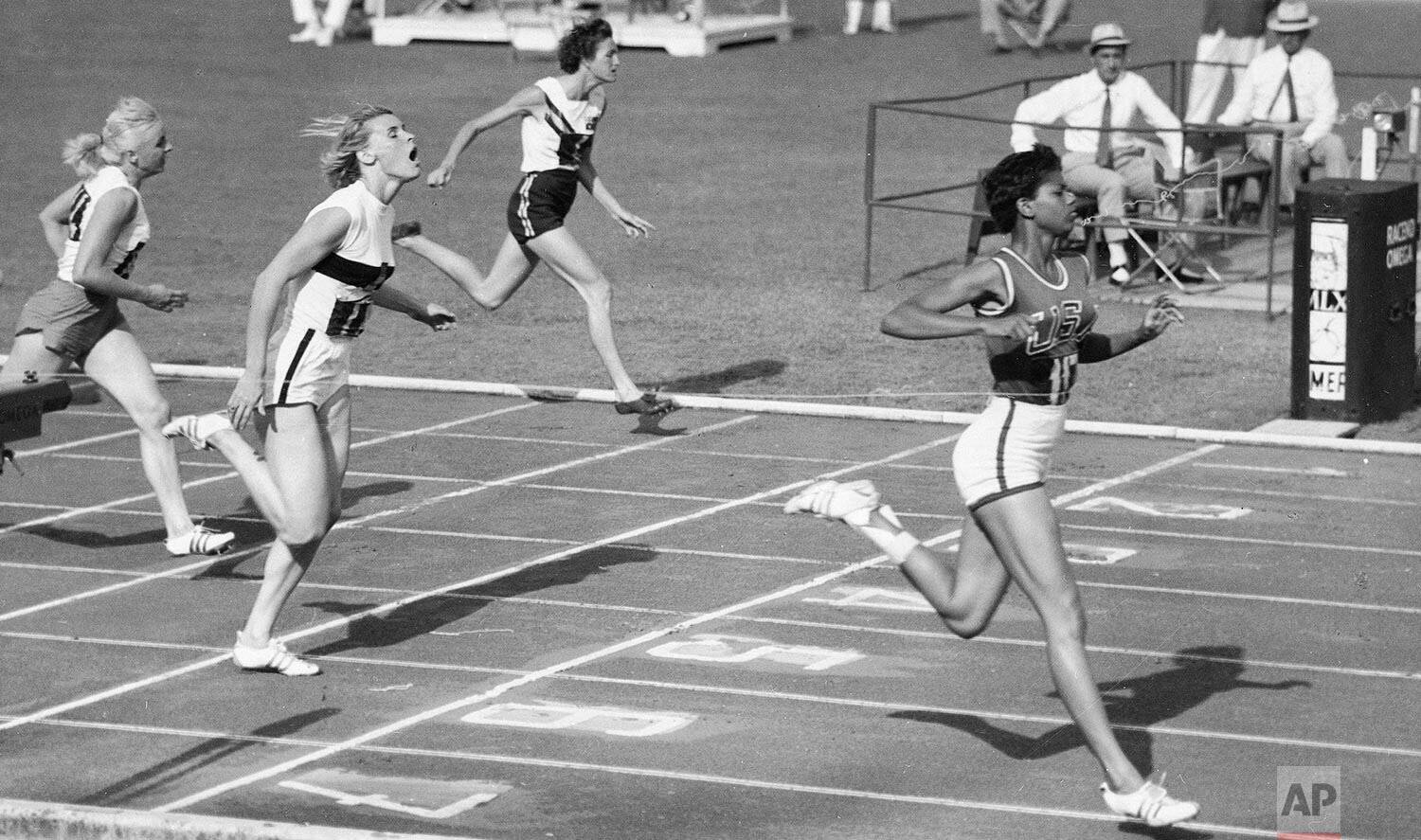
Wilma Rudolph of the United States, right, romps home to win her semi-final of the women's 200-meter race at the Olympic Games in Rome, Sept. 5, 1960. She is followed by Jutta Heine of Germany (black stripe on white shirt) who was second and Poland's Barbara Janiszewska, who was third. On far side, center rear is Norma Croker-Fleming of Australia, who placed fourth. Miss Rudolph went on to win the final and the gold medal. (AP Photo)
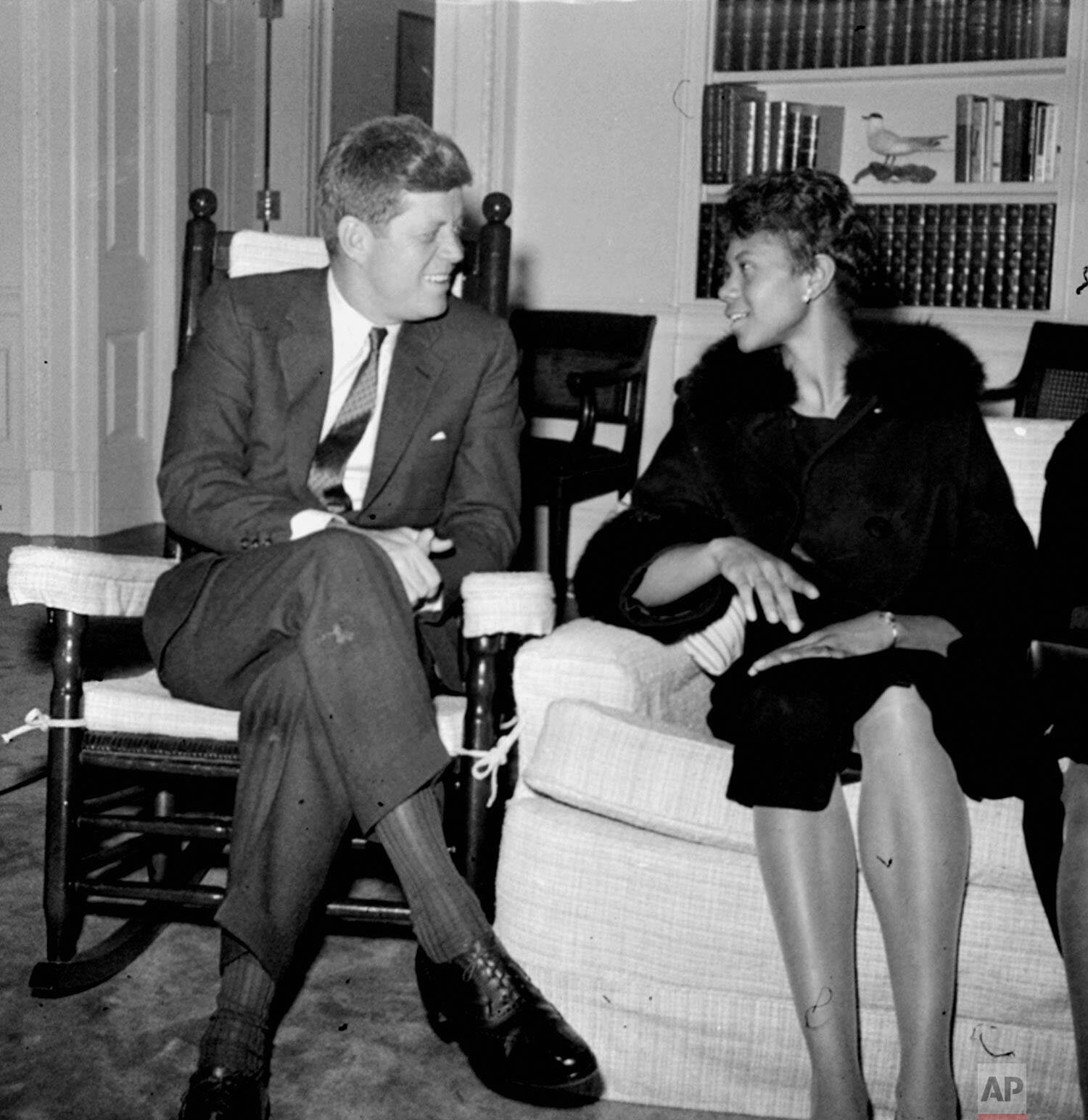
President John F. Kennedy chats in his White House office April 14, 1961, with Wilma Rudolph, winner of three gold medals in the 1960 Olympic games. Wilma, a student at Tennessee State, won the 100- and 200-meter races in Rome and was the anchor runner on the winning 400-meter relay team. (AP Photo/William J. Smith)
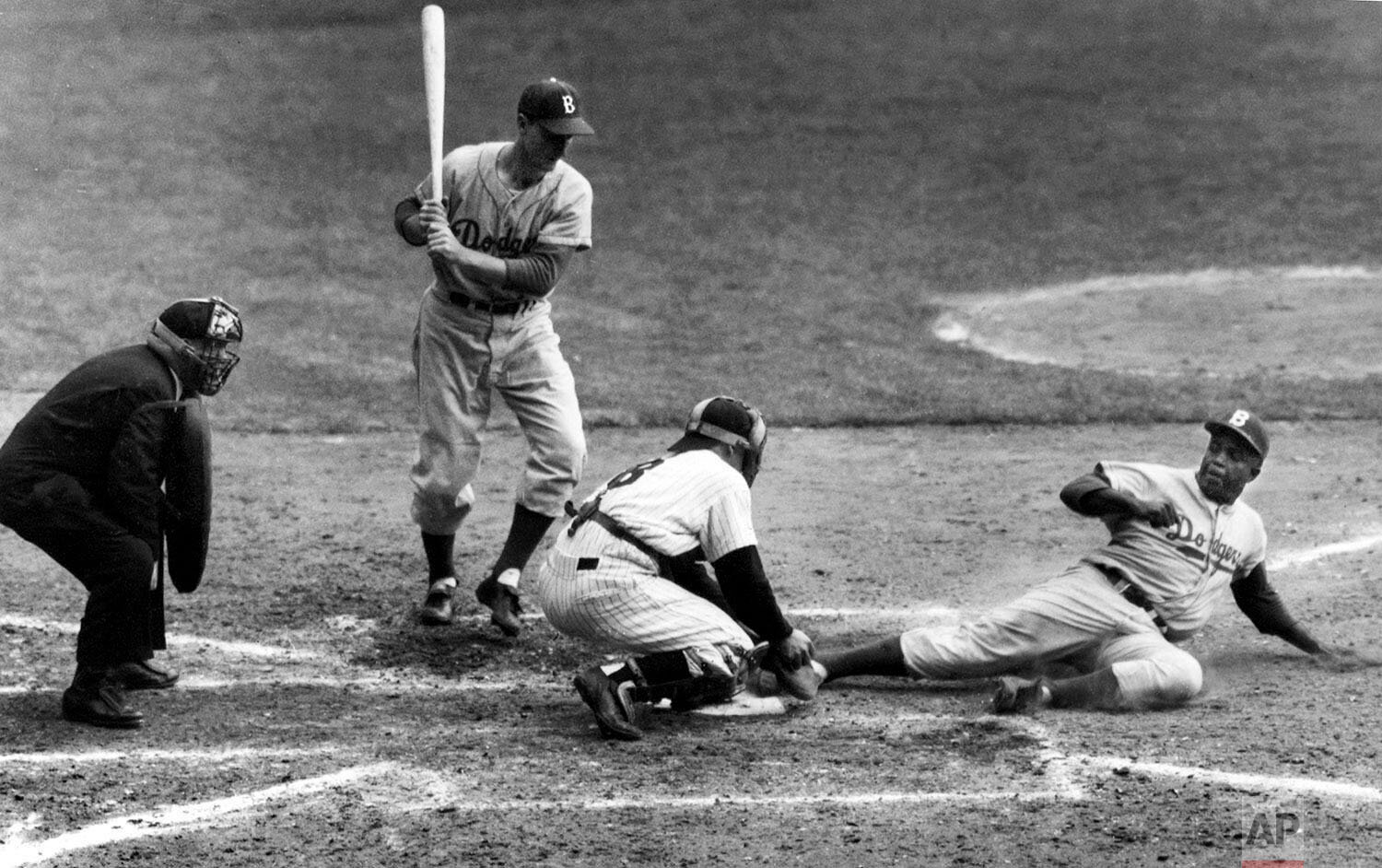
Brooklyn Dodgers' Jackie Robinson safely steals home plate under the tag of New York Yankees catcher Yogi Berra in the eighth inning of the World Series opener at New York's Yankee Stadium, Sept. 28, 1955. (AP Photo/John Rooney)
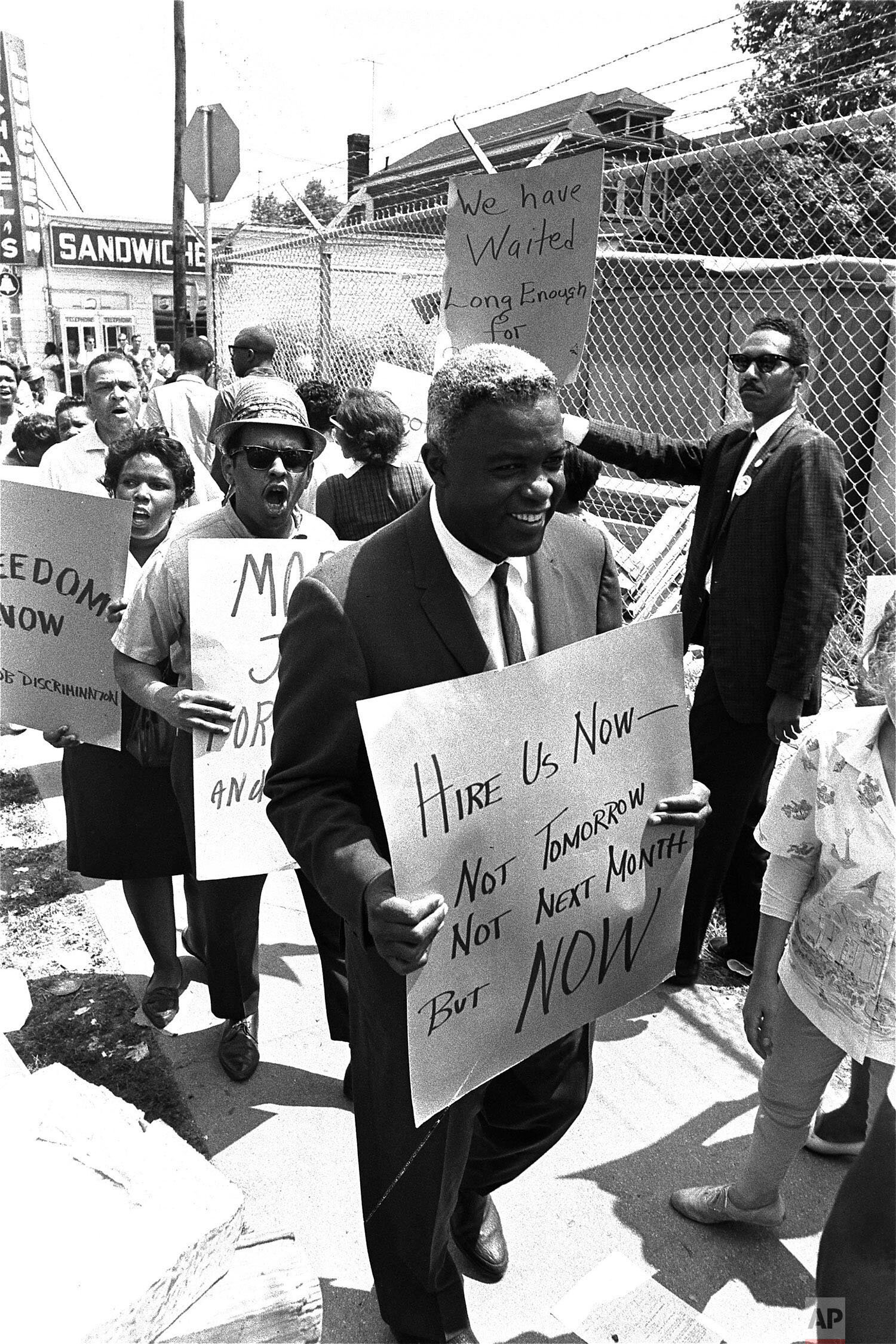
Former baseball star Jackie Robinson carries a placard as he joins pickets at the construction site of the Down State Medical Center in Brooklyn, New York City, August 2, 1963. Robinson and members of CORE, the Congress of Racial Equality, have been demonstrating in an effort to stop construction of publicly financed projects until more jobs are given to blacks. (AP Photo)
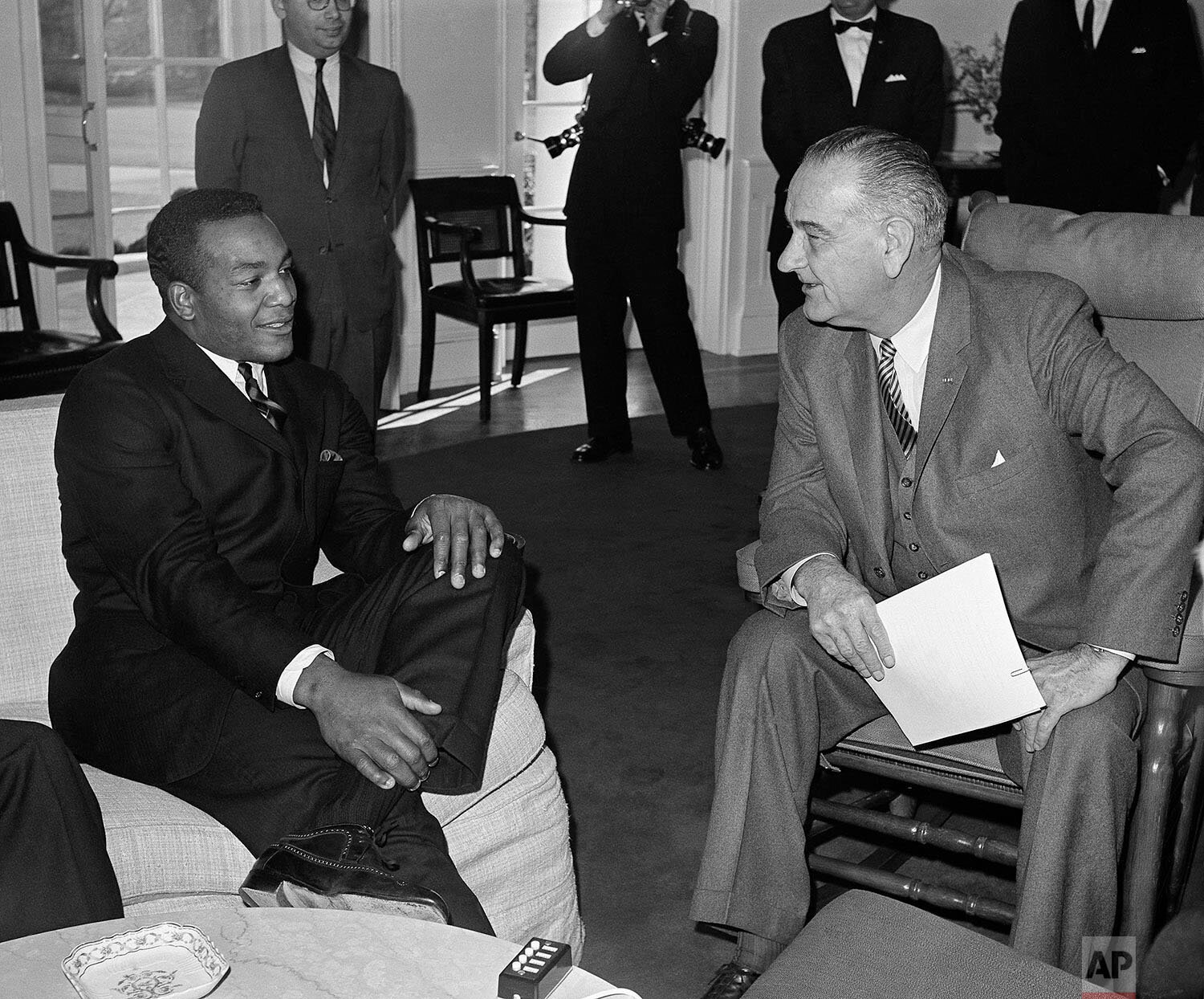
U.S. President Lyndon B. Johnson talks with fullback Jim Brown of the Cleveland Brown professional football team at the White House office December 16, 1963. Brown, who gained more than a mile during the 1963 season, and his teammates defeated the Washington Redskins 27-20. December 15, in Washington DC. (AP Photo/Harvey Georges)
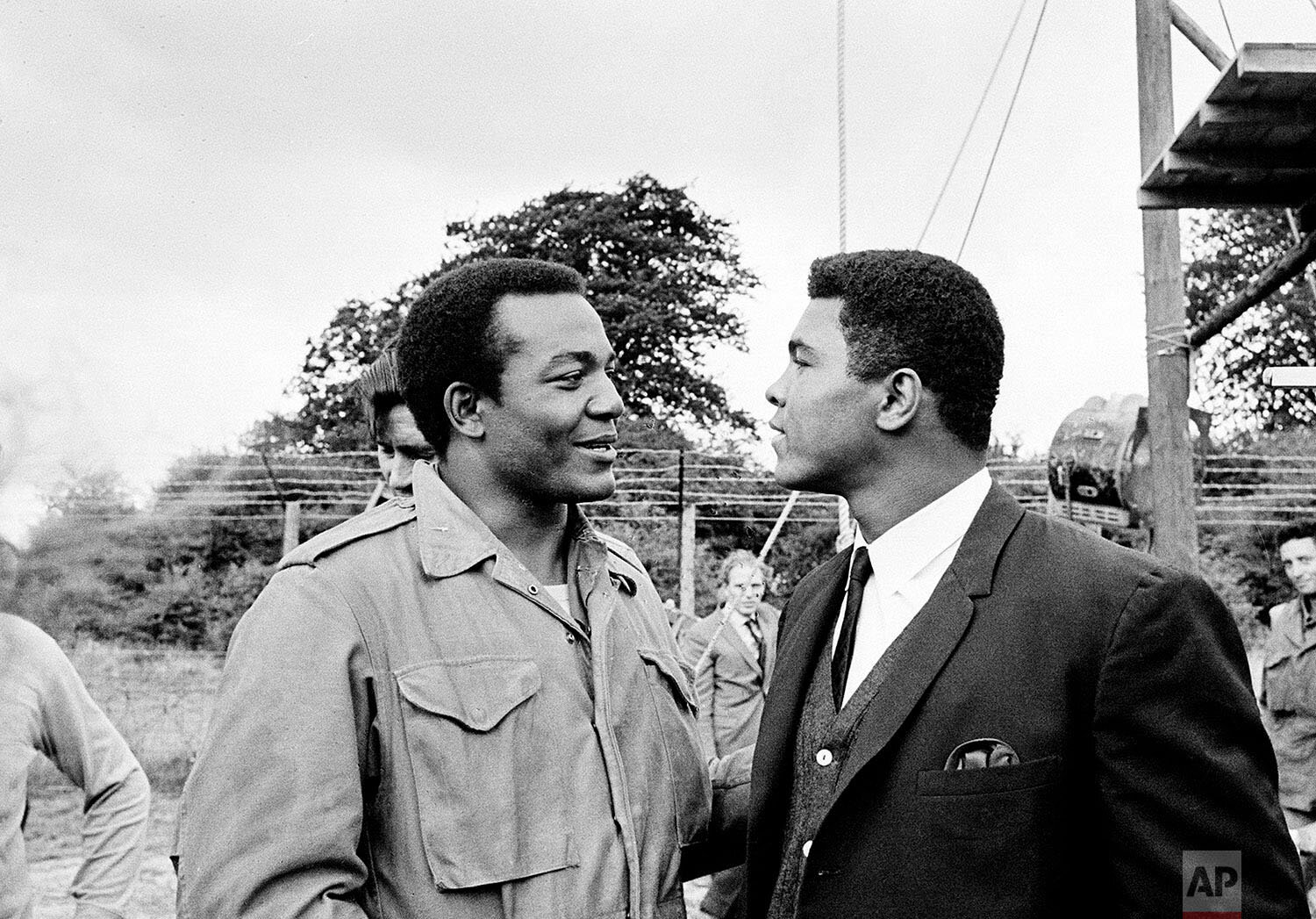
Heavyweight boxer Muhammad Ali, right, visits Cleveland Browns running back and actor Jim Brown on the film set of "The Dirty Dozen" at Morkyate, Bedfordshire, England., Aug. 5, 1966. (AP Photo)
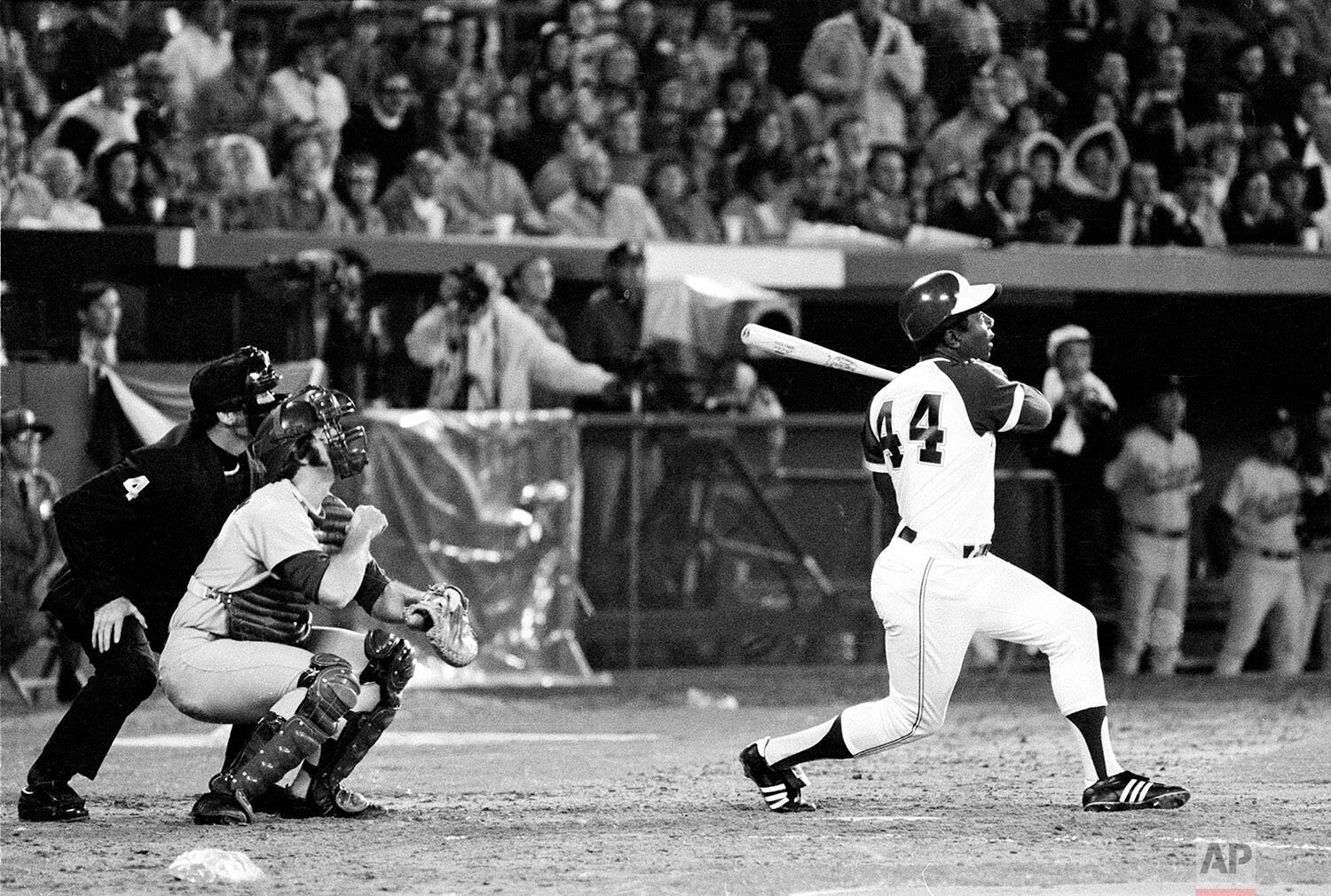
Atlanta Braves' Hank Aaron (44) breaks Babe Ruth's record for career home runs as he hits his 715th off Los Angeles Dodgers pitcher Al Downing in the fourth inning of the game opener at Atlanta-Fulton County Stadium, Ga., Monday night, April 8, 1974. (AP Photo)
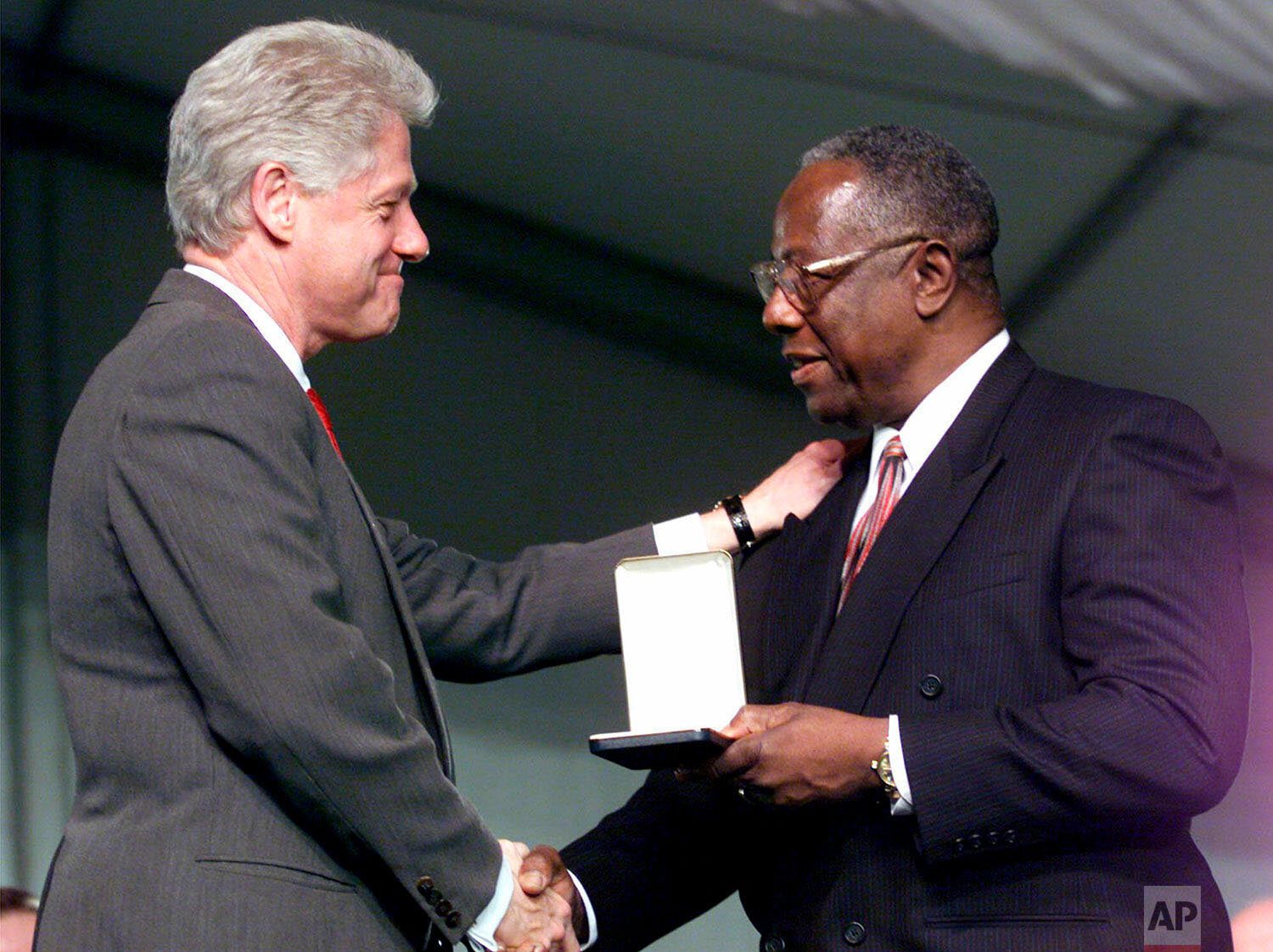
President Clinton presents baseball great Hank Aaron with a Presidential Citizens Medal during a ceremony at the White House Monday, Jan. 8, 2001. The Presidential Citizens Medal was established by President Richard Nixon in 1969 to recognize exemplary service by any citizen. (AP Photo/Ron Edmonds)
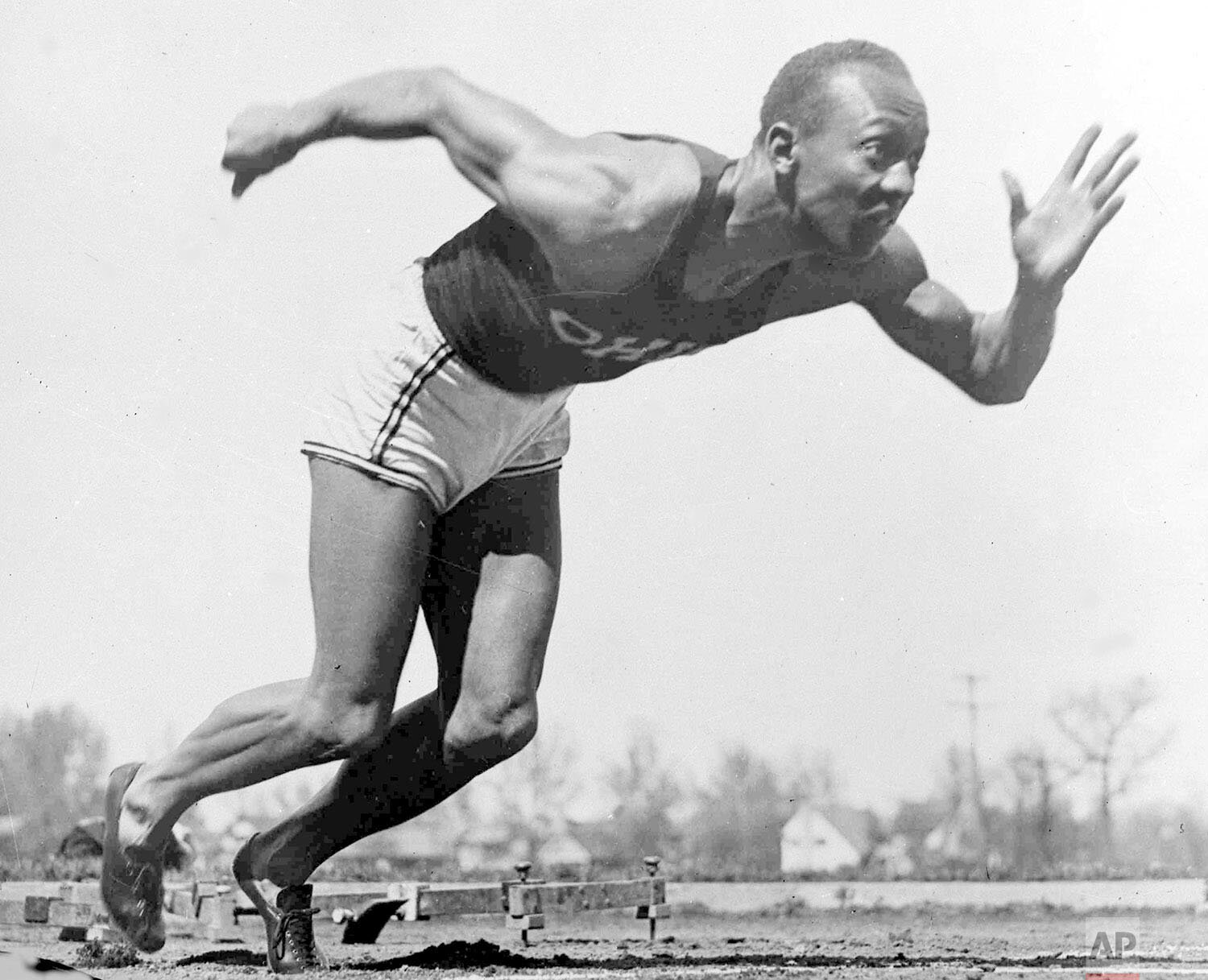
American athlete Jesse Owens practices in the Olympic Village in Berlin, Aug. 5, 1936. Shortly after Owens returned home from his snubbing by Adolph Hitler at the 1936 Olympics, he and America's 17 other black Olympians found a less-than-welcoming reception from their own government, as well. On Thursday, Sept. 29, 2016 relatives of those 1936 African-American Olympians will be welcomed to the White House and will get to shake the President's hand, an honor Owens and the others didn’t receive after they returned home from Berlin 80 years ago. (AP Photo/File)
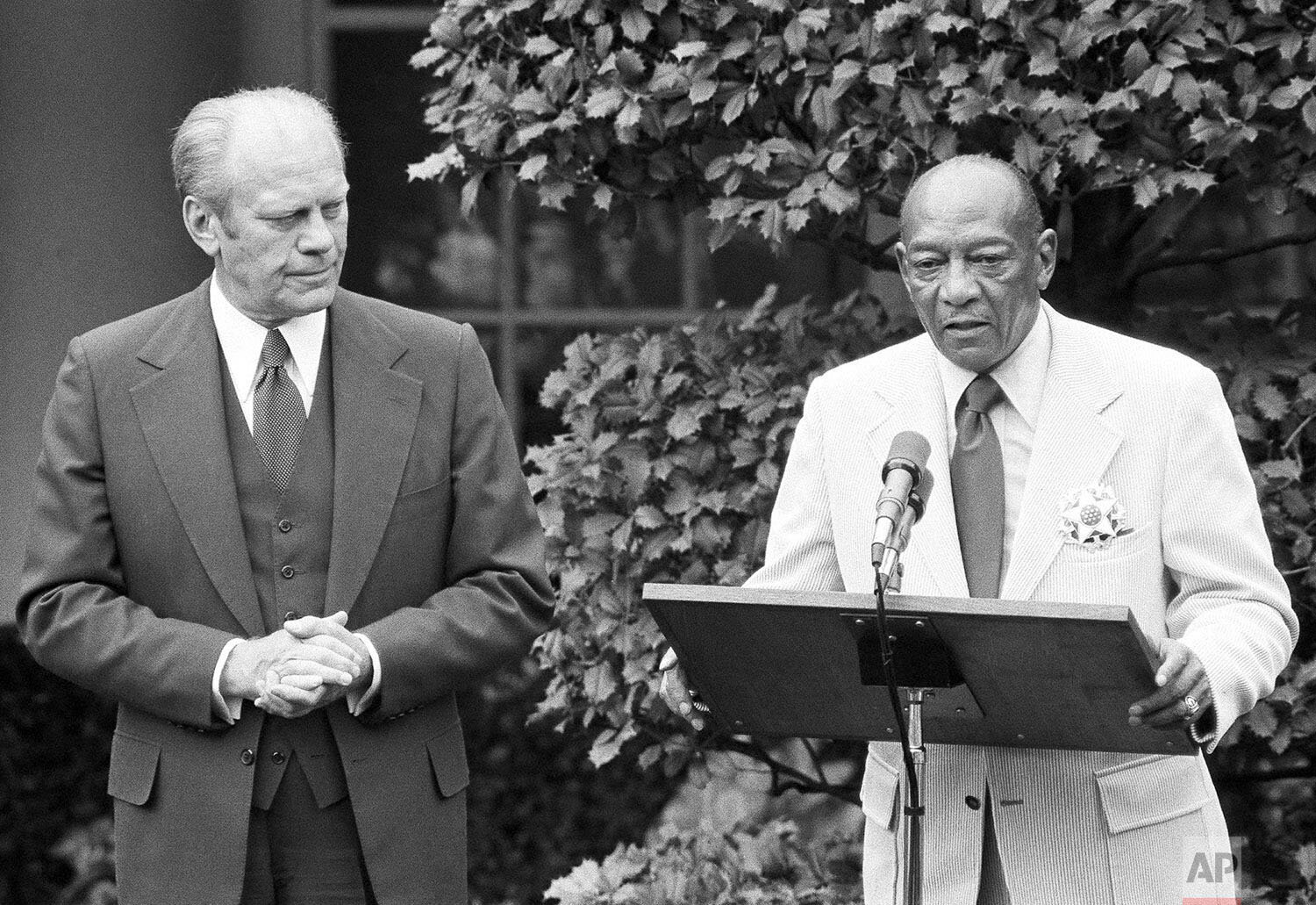
President Gerald Ford with Olympic gold medalist Jesse Owens after presenting him with the Medal of Freedom in a White House East Garden ceremony in Washington on August 5, 1976. Ford feted United States Olympic teams with a reception inside the Executive Mansion following the presentation. (AP Photo)
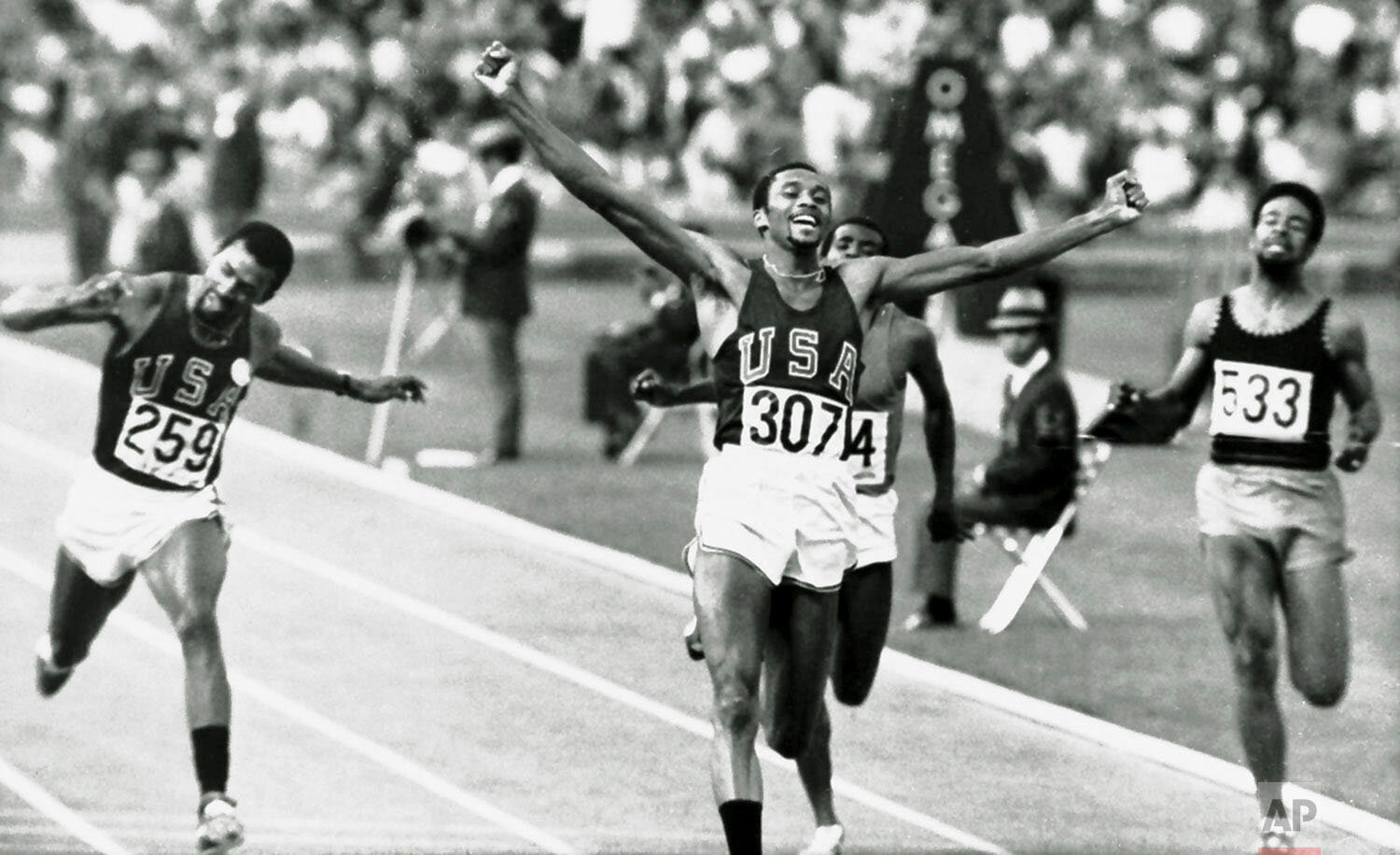
Tommie Smith of the U.S. raises his arms as he wins the 200 meters Olympic sprint in Mexico City Oct. 16, 1968. Teammate John Carlos (259) finished third. At far right is Michael Fray of Jamaica, who did not place. Smith and Carlos caused controversy by raising black power salutes on the podium during their medal ceremony. (AP Photo)
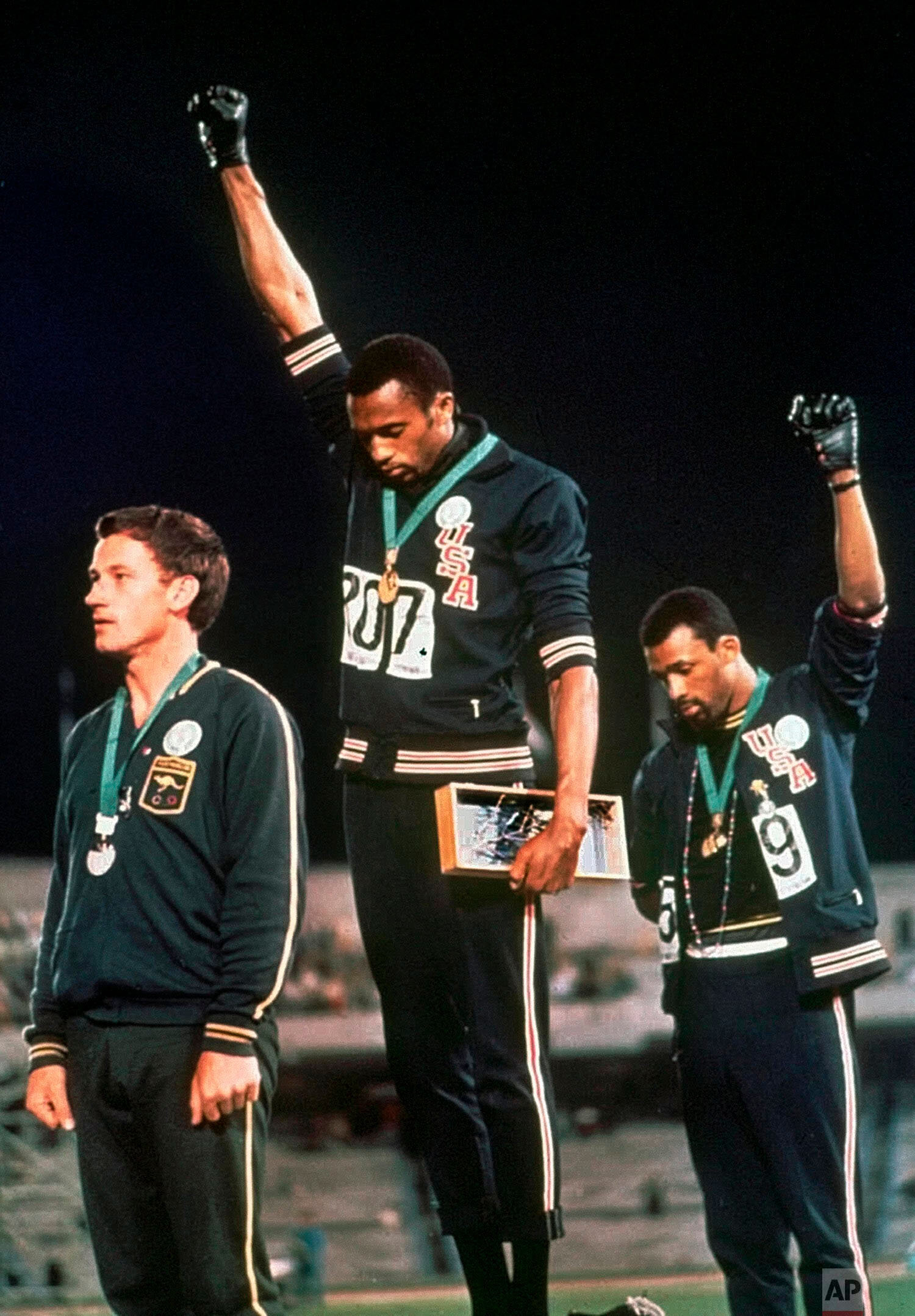
Extending gloved hands skyward in racial protest, U.S. athletes Tommie Smith, center, and John Carlos stare downward during the playing of national anthem Wednesday, Oct. 16, 1968, after Smith received the gold and Carlos the bronze for the 200 meter run at the Summer Olympic Games in Mexico City. Australian silver medalist Peter Norman is at left. (AP Photo)
